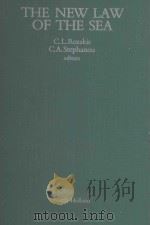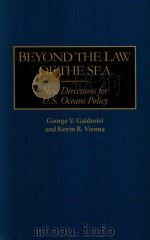《A HANDBOOK ON THE NEW LAW OF THE SEA 1》
| 作者 | 编者 |
|---|---|
| 出版 | MARTINUS NIJHOFF PUBLISHERS |
| 参考页数 | 861 |
| 出版时间 | 1991(求助前请核对) 目录预览 |
| ISBN号 | 0792309243 — 求助条款 |
| PDF编号 | 812894058(仅供预览,未存储实际文件) |
| 求助格式 | 扫描PDF(若分多册发行,每次仅能受理1册) |
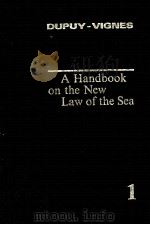
Part Ⅰ The sea and the codification of its law1
Chapter 1 THE MULTIDIMENSIONAL CHARACTER OF THE NEW LAW OF THE SEA3
Section 1.General3
Para.1.The marine environment is a single entity3
Para.2.The law of the sea must be universal5
Para.3.The inequality of States in matters relating to the sea7
Para.4.The package deal on the law of the sea:a blending of its various dimensions8
Section 2.The geographical dimension9
Section 3.The technological dimension14
Para.1.Protection of living resources and planning for their exploitation14
Para.2.The transfer of marine technology16
Section 4.The economic dimension19
Para.1.Access to resources in the zones under national jurisdiction and economic needs19
Para.2.The exploitation of the sea-bed,or the law of the unpredictable21
Section 5.The socio-political dimension23
Para.1.Conditions for the deployment of naval forces24
Para.2.The dialectical relationship between unilateral measures and multilateral negotiation26
Para.3.The decision-making process in the new international institution28
Chapter 2 SOURCES OF THE LAW OF THE SEA29
Section 1.General observations29
Division A.Sources of international law and the law of the sea29
Para.1.The notion of sources29
Para.2.The Statute of the International Court of Justice(ICJ)30
Para.3.The question of sources concerning the law of the sea31
Para.4.Jus cogens33
Para.5.The resolutions of international organizations34
Division B.Unilateral acts36
Para.1.Unilateral acts and international custom36
Para.2.The 200-mile rule38
Para.3.Unilateral acts,conventions and the resolutions of national organizations41
Division C.Universalism and regionalism of the law of the sea42
Para.1.Preliminary considerations42
Para.2.Universalism44
Para.3.Regionalism45
Para.4.The dialectics of universalism and regionalism47
Para.5.The question of regional law and its autonomy49
Para.6.The meetings at Montevideo,Lima and Santo Domingo-territorial and patrimonial seas50
Para.7.African regionalism53
Para.8.Functional regionalism54
Para.9.Geographic regionalism54
Para.10.The role of international organizations57
Section 2.International custom60
Para.1.The role of international custom60
Para.2.Custom throughout history61
Para.3.Codification by the League of Nations66
Para.4.Codification by the United Nations68
Para.5.Regional codification:the case of the OAS70
Para.6.The first two United Nations conferences72
Para.7.International custom in the 1960-1982 period76
Para.8.International custom and its relation to the United Nations Convention on the Law of the Sea77
Para.9.The principle of a common heritage of mankind as a customary norm81
Section 3.International treaties/the 1982 Convention82
Para.1.Historical precedents82
Para.2.The Geneva Conventions of 195884
Para.3.The resumption of the codification process/the 1982 Convention86
Para.4.The general provisions of the 1982 Convention89
Para.5.Final provisions91
Para.6.Participation in the Convention93
Para.7.Final provisions(continued)101
Section 4.Judicial decisions111
Para.1.Judicial decisions:auxiliary sources111
Para.2.The contributions of the Permanent Court of International Justice114
Para.3.The contributions of the International Court of Justice115
Chapter 3 THE PARDO DECLARATION AND THE SIX YEARS OF THE SEA-BED COMMITTEE141
Section 1.The Pardo declaration and the origins of the Sea-Bed Committee142
Division A.The question raised by ambassador Pardo143
Division B.Progress of the doctrine before Pardo144
Section 2.Organization of the Committee and methods of work148
Division A.The creation of official groups148
Division B.The establishment of informal groups150
Division C.Groups of States152
Para.1.Groups formed for the defence of identical concerns153
Para.2.Traditional groups of a political and economic nature155
Section 3.The preparation of norms for a future convention156
Division A.The new concepts resulting from the extension of sovereignty157
Para.1.The principle of free transit passage in international straits157
Para.2.Outlining the economic zone158
Division B.The transition from peaceful uses to the concept of the common heritage of mankind158
Chapter 4 THE THIRD UNITED NATIONS CONFERENCE ON THE LAW OF THE SEA163
Section 1.The general setting163
Division A.Within the United Nations163
Para.1.Procedure163
Para.2.Agenda163
Division B.Outside the United Nations163
Para.1.General163
Para.2.The oil crisis164
Para.3.Viet Nam164
Para.4.Detente164
Para.5.European integration164
Para.6.Recession164
Section 2.Organization164
Division A.Mandate164
Division B.Participation165
Division C.Plenary165
Para.1.Mandate165
Para.2.Composition166
Para.3.President of the Conference166
Para.4.Rapporteur-General166
Para.5.Bureau166
Division D.Committees166
Para.1.First Committee166
Para.2.Second Committee167
Para.3.Third Committee167
Para.4.Drafting Committee168
Para.5.General Committee169
Division E.Negotiating groups169
Para.1.Established by the Conference169
Para.2.Established by the President or a Committee Chairman169
Para.3.Established by delegates169
Para.4.Established by interest170
Para.5.Established by region or subregion171
Para.6.Formed ad hoc171
Division F.Formal procedure171
Para.1.The "Gentleman's Agreement"171
Para.2.The rules of procedure172
Para.3.Practice173
Section 3.The texts174
Division A.Background174
Division B.The Informal Single Negotiating Text174
Division C.Revisions174
Division D.Procedural reaction to the ICNT174
Division E.Adoption of the Convention175
Para.1.Formal amendments175
Para.2.Final text176
Division F.Implications of this procedure176
Para.1.Travaux preparatoires176
Para.2.The package deal176
Section 4.Summary of the sessions176
Section 5.The first session178
Section 6.The second session178
Division A.General178
Division B.The rules of procedure178
Division C.The First Committee178
Para.1.General178
Para.2.The system of exploitation179
Para.3.Basic conditions of exploitation179
Para.4.Economic implications180
Division D.The Second Committee180
Para.1.The procedural problem180
Para.2.Substantive results181
Division E.The Third Committee181
Para.1.Procedure181
Para.2.Protection and preservation of the marine environment181
Para.3.Marine scientific research182
Division F.Settlement of disputes183
Section 7.The third session183
Division A.General183
Division B.The First Committee184
Division C.The Second Committee184
Para.1.Procedure184
Para.2.The Informal Single Negotiating Text185
Division D.The Third Committee199
Para.1.Protection and preservation of the marine environment199
Para.2.Marine scientific research204
Para.3.Development and transfer of technology205
Section 8.The fourth session205
Division A.General205
Division B.The First Committee205
Para.1.Procedure205
Para.2.The Kissinger initiative205
Para.3.The issues206
Division C.The Second Committee208
Para.1.Procedure208
Para.2.Changes208
Para.3.Issues208
Division D.The Third Committee209
Para.1.Protection and preservation of the marine environment209
Para.2.Marine scientific research210
Division E.Informal Plenary211
Para.1.Dispute settlement obligations211
Para.2.Issues regarding dispute settlement'212
Section 9.The fifth session213
Division A.General213
Division B.Fisheries zones213
Para.1.Claims213
Para.2.Effects on the Conference213
Section 10.The sixth session214
Division A.General214
Division B.The First Committee214
Para.1.Negotiations214
Para.2.The ICNT214
Division C.The Second Committee216
Para.1.The Casteneda-Vindenes Group216
Para.2.Status of the economic zone216
Division D.The Third Committee217
Para.1.Marine scientific research217
Para.2.Protection and preservation of the marine environment219
Division E.Informal Plenary219
Para.1.Settlement of disputes219
Para.2.Preamble and final clauses219
Section 11.The seventh session219
Division A.Organization of work219
Para.1.The presidency219
Para.2.Revision of the ICNT220
Para.3.The negotiating groups220
Para.4.Other issues221
Division B.The First Committee222
Para.1.Negotiating Group 1222
Para.2.Negotiating Group 2222
Para.3.Negotiating Group 3222
Para.4.Unilateral legislation223
Division C.The Second Committee223
Para.1.General223
Para.2.Negotiating Group 4224
Para.3.Negotiating Group 5224
Para.4.Negotiating Group 6224
Para.5.Negotiating Group 7225
Division D.The Third Committee226
Para.1.Protection and preservation of the marine environment226
Para.2.Marine scientific research226
Division E.Informal Plenary226
Division F.The Drafting Committee226
Section 12.The eighth session226
Division A.General226
Division B.The First Committee227
Division C.The Second Committee227
Para.1.Negotiating Groups 4 and 5227
Para.2.Negotiating Group 6227
Para.3.Negotiating Group 7227
Division D.The Third Committee228
Division E.The Informal Plenary228
Section 13.The ninth session228
Division A.General228
Para.1.New texts228
Para.2.Deferred issues228
Division B.The First Committee230
Para.1.General230
Para.2.Uses in general230
Para.3.The parallel system230
Para.4.Denial of contracts230
Para.5.Interim production ceiling231
Para.6.Obligations of miners231
Para.7.The Sea-Bed Authority232
Para.8.The Review Conference233
Division C.The Second Committee233
Para.1.The continental shelf233
Para.2.Delimitation234
Para.3.Marine mammals234
Para.4.Innocent passage of warships234
Division D.The Third Committee234
Division E.Informal Plenary234
Para.1.General provisions234
Para.2.Final clauses235
Division F.Concluding plans237
Section 14.The tenth session237
Division A.The presidency237
Division B.The United States review238
Division C.The Draft Convention238
Para.1.Procedure238
Para.2.Sites238
Para.3.Participation239
Para.4.Preparatory Commission239
Section 15.The eleventh(and final)session239
Division A.Results of the United States review239
Division B.The green book240
Division C.The Group of Eleven240
Division D.Preparatory investment in pioneer activities241
Para.1.Negotiations241
Para.2.Resolution Ⅱ241
Para.3.Dispute settlement241
Para.4.Effect241
Division E.The Preparatory Commission242
Para.1.Functions242
Para.2.Participants242
Para.3.Procedures242
Division F.Parties to the Convention242
Para.1.The right to become a Party242
Para.2.National liberation movements242
Division G.Adoption of the Convention243
Para.1.Innocent passage of warships243
Para.2.Consensus243
Para.3.The vote243
Division H.Conclusion of the Conference244
Section 16.Epilogue:treaty law without signature244
Part Ⅱ The sea and its partitions245
Chapter 5 THE SEA UNDER NATIONAL COMPETENCE247
Section 1.Internal waters249
Para.1.Internal waters are subject to the sovereignty of the coastal State249
Para.2.Freedom of access252
Section 2.The territorial sea253
Division A.The dual nature of the territorial sea254
Para.1.Doctrinal oppositions254
Para.2.Duality of the legal regime257
Division B.The extent of the territorial sea262
Para.1.The breadth of the territorial sea262
Para.2.Method of calculating the points of departure of the territorial sea263
Para.3.The contiguous zone268
Section 3.Archipelagic States269
Para.1.The outward extension of sovereignty272
Para.2.Residual freedoms273
Section 4.The exclusive economic zone:the territorial influence275
Division A.A compromise formula:tempered territorialism277
Para.1.The economic zone is not the territorial sea278
Para.2.The economic zone is not the high seas.Legal nature of the zone284
Para.3.The "Castaneda compromise"288
Division B.The potentialities of sovereignty292
Para.1.From functional competences to territorial rights292
Para.2.From exclusive competence to discretionary power303
Annex.Extent of national claims over maritime zones308
Chapter 6 THE CONTINENTAL SHELF DEFINITION AND RULES APPLICABLE TO RESOURCES315
Section 1.Definition and background315
Division A.The physical fact:the extension of continents under the sea315
Division B.The economic importance of the resources of the continental margin320
Division C.Emergence and development of the legal concept of the continental shelf322
Para.1.The Truman Proclamation of 28 September 1945325
Para.2.From customary rules to rules laid down by agreement:the Convention on the Continental Shelf of 29 April 1958327
Para.3.The continental shelf in the "new law of the sea";the 1982 Convention329
Section 2.The legal concept of the continental shelf336
Division A.The nature of the continental shelf:the concept of natural prolongation336
Para.1.The origin of the concept of natural prolongation:from the Truman Proclamation to the North Sea Continental Shelf cases336
Para.2.The content of the concept of natural prolongation:nature and law338
Division B.The outer limits of the continental shelf344
Para.1.From nature to law:the definition in the 1958 Geneva Convention345
Para.2.Reverting to nature:the search for criteria deriving from equating the legal continental shelf with the continental margin348
Para.3.A difficult combination:the adoption of a set of alternative criteria(1980)351
Division C.The Commission on the Limits of the Continental Shelf357
Para.1.How the Commission on the Limits of the Continental Shelf is organized357
Para.2.How the Commission on the Limits of the Continental Shelf functions359
Section 3.The legal regime governing the continental shelf's resources363
Division A.The rights of the coastal State363
Para.1.The scope of the coastal State's rights363
Para.2.The nature of the coastal State's rights367
Division B.Obligations of the coastal State371
Para.1.Continental shelf and jus communications371
Para.2.Payments and contributions by the coastal State with respect to the exploitation of the continental shelf375
Chapter 7 THE HIGH SEAS383
Section 1.The high seas are open to all States384
Subsection 1.The principle of freedom385
Division A.General theory of the principle of freedom385
Para.1.The evolution of the principle of freedom385
Para.2.The bases of the principle of freedom388
Division B.The different freedoms of the high seas389
Para.1.The recognized freedoms390
Para.2.The other freedoms and the limits to freedom392
Subsection 2.The principle of equality395
Division A.The equal rights of States on the high seas395
Para.1.Equality of access to the high seas for all States396
Para.2.Equality of use of the high seas for all States397
Division B.The guarantees of equal rights399
Para.1.The absence of individual State sovereignty on the high seas399
Para.2.The absence of collective State sovereignty on the high seas399
Section 2.The high seas are subject to law400
Subsection 1.The requirement that all ships be subject to a juridical system401
Division A.The nationality of a ship401
Para.1.The conditions governing the attribution of nationality401
Para.2.The penalties for non-compliance with the conditions governing the attribution of nationality401
Division B.The legal status of ships406
Para.1.The principle of the exclusivity of the flag State407
Para.2.The exceptions to the principle of the exclusivity of the flag State408
Subsection 2.The exercise of policing functions by the flag State414
Division A.The flag State and the drawing up of the rules for policing the high seas414
Para.1.The policing rules intended to protect men and property on the high seas415
Para.2.The policing rules intended to prevent the high seas from becoming a place of refuge for the commission of unlawful acts417
Division B.Respect for the policing rules on the high seas419
Para.1.Searching out and verifying violations of the policing rules on the high seas420
Para.2.Enforcement with regard to violations of the policing rules on the high seas422
Chapter 8 THE DELIMITATION OF MARINE SPACES BETWEEN STATES WITH OPPOSITE OR ADJACENT COASTS425
Section 1.Introduction425
Section 2.Substantive rules on maritime delimitation439
Subsection 1.The territorial sea and internal maritime waters439
Subsection 2.The contiguous zone442
Subsection 3.The exclusive economic zone and the continental shelf445
Division A.The rules of 1958 and their evolution445
Para.1.Introduction445
Para.2.Evolution of international case-law:general principles447
Para.3.Problems relating to the implementation of the general principles identified by court and tribunals462
Para.4.Summary476
Division B.The provisions of the 1982 Convention477
Para.1.The formula inserted in Articles 74(1)and 83(1)477
Para.2.Critical analysis of the formula contained in Articles 74(1)and 83(1)480
Para.3.Summary485
Subsection 4.Special problems486
Division A.Introduction486
Division B.Low-tide elevations486
Division C.Permanent harbour works488
Division D.Artificial islands,installations and structures489
Section 3.Procedural rules in matters of maritime delimitation490
Subsection 1.The stability of maritime delimitations and the publicity to be given to such delimitations490
Subsection 2.Settlement of disputes relating to maritime delimitation491
Subsection 3.Attitude to be observed pending the settlement of a maritime delimitation dispute495
Section 4.General summary495
Chapter 9 RIGHT OF ACCESS TO THE SEA AND FREEDOM OF TRANSIT501
Section 1.Introduction501
Section 2.The maritime rights of land-locked States502
Division A.The right of land-locked States to sail ships under their maritime flag502
Division B.The access of ships of land-locked States to maritime ports505
Section 3.Transit to and from the sea for land-locked States508
Division A.The evolving law of transit508
Division B.The present regime517
Para.1.Recognition and scope of the right of access to the sea517
Para.2.The implementation of the right of access to the sea520
Chapter 10 THE ARCTIC AND ANTARCTIC REGIONS525
Section 1.General remarks525
Subsection 1.The dearth of express provisions in the general conventions525
Subsection 2.Differences in the geographical data of the Arctic and the Antarctic525
Division A.Common features525
Division B.The Arctic526
Division C.The Antarctic526
Subsection 3.Common provisions527
Division A.Pollution of the marine environment527
Division B.Baselines528
Division C.Drifting ice-packs528
Section 2.The Arctic529
Subsection 1.Definition of the zone529
Subsection 2.Claims and jurisdictions532
Division A.General features532
Division B.Spitsbergen532
Division C.Greenland533
Division D.The theory of sectors534
Para.1.Retrospective534
Para.2.Position of the USSR535
Para.3.Position of Canada536
Para.4.Position of the United States537
Para.5.Position of Denmark537
Para.6.Position of Norway538
Division E.Problems not yet solved538
Para.1.Spitsbergen538
Para.2.The Barents Sea539
Subsection 3.Economic zones and biological resources539
Division A.Fishing zones539
Division B.The Barents Sea540
Subsection 4.Continental shelf and international Area540
Division A.Application of the 1982 Convention540
Division B.Spitsbergen and the Barents Sea541
Division C.The Canada-Greenland delimitation541
Division D.The Jan Mayen-Iceland delimitation541
Division E.The USSR-Alaska delimitation542
Division F.International Area542
Subsection 5.The high seas542
Subsection 6.Protection of the marine environment543
Division A.Application of the 1982 Convention543
Division B.Canadian law of 1972543
Section 3.The Antarctic544
Subsection 1.Definition of the zone544
Subsection 2.Claims and jurisdictions545
Division A.The sovereignties claimed545
Division B.The political delimitations547
Division C.The Antarctic Treaty548
Para.1.Retrospective548
Para.2.Article IV549
Para.3.Article VI550
Para.4.Uncertainties551
Division D.Competence of the consultative meetings551
Para.1.Dynamic development of the Treaty551
Para.2.Overall regulatory jurisdiction552
Subsection 3.Biological resources553
Division A.The recommendations553
Para.1.Retrospective553
Para.2.Limits to the effectiveness of the recommendations554
Division B.The London Convention of 1972554
Para.1.Retrospective554
Para.2.Subject of the Convention555
Division C.The Canberra Convention of 1980555
Para.1.Retrospective555
Para.2.Special problems556
Para.3.Subject of the Convention558
Division C.Fishing zones558
Subsection 4.Continental shelf and international Area559
Division A.Continental shelf559
Division B.International Area559
Subsection 5.Protection of the marine environment560
Chapter 11 UNDERWATER ARCHAEOLOGICAL AND HISTORICAL OBJECTS561
Section 1.Introduction561
Section 2.Current legal framework at national and international level562
Section 3.The 1982 Convention on the Law of the Sea564
Para.1.Use of terms564
Para.2.General rules565
Para.3.Regime566
Para.4.Conclusions572
Section 4.The Draft European Convention on the protection of underwater cultural heritage573
Para.1.Application574
Para.2.Territorial scope574
Para.3.Standards574
Para.4.Conclusions575
Section 5.Conclusions575
Part Ⅲ The international sea-bed Area577
Chapter 12 THE AREA AS THE COMMON HERITAGE OF MANKIND579
Section 1.Transspatial mankind580
Para.1.Universalism581
Para.2.Participation582
Section 2.Transtemporal mankind583
Para.1.The international community is merely a manager583
Para.2.The manager is accountable585
Chapter 13 THE INTERNATIONAL SEA-BED AREA587
Introduction587
Section 1.The international sea-bed Area590
Division A.Definition of the Area590
Division B.Description of the Area592
Section 2.The resources594
Division A.Polymetallic nodules595
Para.1.Origin and composition of nodules597
Para.2.Distribution of nodules598
Division B.Hydrothermal sources603
Division C.Hydrocarbons603
Division D.Other resources604
Section 3.Technical and economic factors605
Division A.Mining technology for Area minerals605
Para.1.Prospecting and evaluation606
Para.2.Mining607
Para.3.Transport and processing608
Division B.Economic and financial aspects610
Para.1.The mine site611
Para.2.Financial imponderables613
Para.3.Markets for the nodule minerals615
Section 4.The resources policy617
Division A.History of the concept617
Division B.The foundations of a resources policy620
Para.1.General philosophy of the development of the resources of the Area620
Para.2.Participation of developing States621
Para.3.Equilibrium of markets622
Para.4.Protection of land-based producers623
Division C.Production limitation,the key component of the resources policy624
Para.1.Commodity agreements625
Para.2.Compensation for adverse effects625
Para.3.Production limitation626
Para.4.Computing the production ceiling629
Para.5.The basis for the compromise631
Section 5.Conclusions632
Chapter 14 THE REGIME FOR THE EXPLORATION AND EXPLOITATION OF SEA-BED MINERAL RESOURCES635
Section 1.Background of the regime and development of the negotiations636
Section 2.Basic characteristics of the regime640
Para.1.The principle of limited geographical application641
Para.2.The principle of limited material content642
Para.3.The principle of public interest643
Para.4.The principle of plurality of operators644
Para.5.The principle of international control645
Para.6.The principle of transitory character645
Section 3.Carrying out of activities in the area:operators under the parallel system647
Para.1.Central role of the Authority:the basic standards648
Para.2.The Enterprise as a body for international administration649
Para.3.Public and private operators:the concept of association with the Authority652
Para.4.Choice between various kinds of joint enterprise653
Para.5.Outline of operations and associations under the parallel system654
Section4.Procedure for the selection of applicants:general and special rules655
Para.1.Conditions of nationality and sponsorship655
Para.2.Conditions governing technical and financial qualification657
Para.3.Automatic nature of the selection of applicants and description of procedures657
Para.4.Obtaining a production authorization659
Para.5.Conditions required of the Enterprise660
Section 5.Special policies of the regime661
Para.1.Policy on the transfer of technology661
Para.2.Anti-monopoly policy665
Para.3.Protection of the marine environment666
Section 6.Stages and rules relating to mining operations667
Para.1.Provisions on scientific research667
Para.2.The stage of prospecting668
Para.3.Exploration and exploitation stages668
Para.4.Mechanisms for the reservation of areas-basis of the parallel system669
Para.5.Rules,regulations and procedures of the Authority670
Section 7.The regime for preparatory investments670
Para.1.Application submitted by the pioneer investor671
Para.2.The arrangements devised by the Preparatory Commission673
Para.3.Priorities accorded to pioneer investors676
Para.4.Obligations of pioneer investors678
Section 8.Financial conditions of operations678
Para.1.Financial policy objectives679
Para.2.Fundamental differences and compromise formulae680
Para.3.Financial rules applicable to the Enterprise681
Section 9.Legal regime of contracts682
Para.1.Stability of contracts683
Para.2.Suspension and termination of contracts,monetary penalties684
Para.3.Applicable law and responsibility684
Section 10.Conclusions685
Chapter 15 INSTITUTIONAL ARRANGEMENTS689
Section 1.Institutionalization of the law of the sea689
Subsection 1.Before the 1982 Convention689
Subsection 2.After the 1982 Convention691
Para.1.Existing organizations691
Para.2.New organizations693
Subsection 3.The Authority:tradition and innovation695
Section 2.The Authority:antecedents698
Subsection 1.The proposals made in the Sea-Bed Committee698
Subsection 2.The negotiations at the Conference701
Section 3.Purposes of the Authority703
Subsection 1.Representation of mankind704
Subsection 2.Administration of the Area and its resources706
Para.1.The organization of the activities in the Area:monopoly706
Para.2.The conduct of activities in the Area:competition708
Para.3.The control of activities in the Area:co-operation710
Section 4.Principles710
Subsection 1.The principle of the sovereign equality of members710
Subsection 2.The principle of good faith712
Subsection 3.The principle of co-operation712
Section 5.General characteristics713
Subsection 1.Intergovernmental character713
Subsection 2.Universal character716
Subsection 3.Legal personality717
Section 6.The powers of the Authority and their limits717
Subsection 1.The limit rationae materiae:activities in the Area718
Subsection 2.The limit rationae loci:the Area720
Subsection 3.The legal limit724
Para.1.The rules of the Convention and other supplementary rules724
Para.2.The effects of the legal limit724
Para.3.The question of implicit powers725
Section 7.The principal organs of the Authority:structure and functioning727
Subsection 1.The organic structure of the Authority727
Subsection 2.The Assembly730
Para.1.Membership730
Para.2.Sessions,rules of procedure,bureau730
Para.3.Procedures for the adoption of decisions731
Subsection 3.The Council733
Para.1.Membership733
Para.2.Decision-making procedures736
Para.3.The subsidiary organs of the Council745
Subsection 4.The Secretariat746
Section 8.The principal organs of the Authority:competence747
Subsection 1.Distribution of competences between the Assembly and the Council747
Subsection 2.Powers and functions of the Assembly750
Para.1.Determination of the general policy of the Authority751
Para.2.Examination of questions or matters and attribution of functions752
Para.3.Approval of rules,regulations and procedures752
Para.4.Equitable sharing of profits753
Para.5.Establishment of a system of compensation and adoption of other measures for economic adjustment753
Para.6.Other functions753
Subsection 3.Powers and functions of the Council754
Para.1.Adoption of specific policies of the Authority755
Para.2.Recommendations and adoption of rules,regulations and procedures755
Para.3.Adoption of directives for the Enterprise756
Para.4.Approval of plans of work756
Para.5.Supervision and control757
Para.6.Power of recommendation758
Para.7.Other functions758
Section 9.The Enterprise759
Subsection 1."The first international commercial organization"759
Subsection 2.Operations760
Subsection 3.Organization761
Para.1.Sound commercial principles762
Para.2.Autonomy763
Para.3.Legal capacity767
Para.4.Structure and decision-making procedures769
Para.5.Special measures on behalf of the Enterprise771
Section 10.The judicial review of the acts of the Authority777
Subsection 1.The special system for the settlement of disputes in Part XI777
Subsection 2.The question of the illegality of the acts of international organizations780
Subsection 3.Disputes arising from acts of the Authority784
Para.1.Background784
Para.2.The system established in the Convention to review legality786
Para.3.Other disputes caused by acts of the Authority793
Section 11.The transitional arrangements:the Preparatory Commission795
Subsection 1.Organization of the Preparatory Commission796
Para.1.Composition796
Para.2.Structure798
Para.3.Taking of decisions799
Subsection 2.The Preparatory Commission as a transnational body804
Subsection 3.The Preparatory Commission as the administering body of the Area806
Para.1.Registration of pioneer investors809
Para.2.Designation of the area to be reserved for the Authority812
Para.3.Request to carry out exploration in reserved areas813
Para.4.Designation of personnel for training814
Para.5.Determination of periodic expenditures814
Para.6.Receipt of portions of the pioneer area relinquished by the pioneer investor814
Para.7.Certification of compliance with resolution Ⅱ815
Subsection 4.The Preparatory Commission as a test for a new form of co-operation817
Chapter 16 ESTABLISHMENT OF THE PREPARATORY COMMISSION FOR THE INTERNATIONAL SEA-BED AUTHORITY AND FOR THE INTERNATIONAL TRIBUNAL FOR THE LAW OF THE SEA821
Section 1.The nature of resolutions Ⅰ and Ⅱ824
Section 2.The establishment of the Preparatory Commission825
Para.1.Composition of the Commission826
Para.2.Rules of procedure826
Para.3.Duration of the Commission's mandate826
Para.4.The financing of the Commission827
Section 3.The work of the Preparatory Commission828
Para.1.Structure of the Preparatory Commission828
Para.2.Functioning of the various organs829
Para.3.Composition of the various bureaux829
Para.4.The implementation of resolution Ⅰ830
Para.5.The implementation of resolution Ⅱ831
Part Ⅳ The uses of the sea833
Chapter 17 NAVIGATION835
Section 1.Freedom of navigation and its limits835
Division A.Freedom of navigation835
Para.1.Historical origin835
Para.2.The concept of freedom of navigation836
Para.3.Geographical scope838
Para.4.The means of exercising freedom of navigation:ships841
Para.5.Freedom of navigation-what it comprises845
Division B.Limits on the freedom of navigation847
Para.1.The various types of limits847
Para.2.Rules allowing physical interference with the navigation of foreign vessels848
Para.3.General and particular rules designed to ensure compatibility between navigation and other activities at sea868
Para.4.General rules designed to ensure compatibility between navigation and other freedoms of the high seas869
Para.5.Special compatibility rules designed to ensure the exercise of navigation by different States873
Para.6.Particular rules of compatibility between navigation and other freedoms887
Para.7.Rules relating to the compatibility between freedom of navigation and powers of the coastal State over its economic zone and its continental shelf889
Para.8.Rules on compatibility between freedom of navigation and activities of exploration and exploitation of the international sea-bed Area895
Para.9.Warships and other ships on government service and the freedom of navigation899
Section 2.Innocent passage906
Division A.The general rule906
Para.1.The principle of innocent passage906
Para.2.Geographical scope of innocent passage907
Para.3.The concept of "passage"910
Para.4.When is passage "innocent"?911
Para.5.The rights of the coastal State as against non-innocent passage915
Para.6.The regulation of innocent passage by the coastal State917
Division B.Rules peculiar to certain vessels924
Para.1.The passage of nuclear vessels and vessels carrying dangerous cargoes924
Para.2.The passage of submarines926
Para.3.The innocent passage of warships929
Division C.The suspension of the exercise of the right of innocent passage935
Division D.The exercise of criminal and civil jurisdictions on board ships engaged in innocent passage937
Division E.Navigation in certain waters940
Para.1.Navigation in internal waters and access to ports940
Para.2.Navigation in international canals942
Section 3.Transit passage and archipelagic passage945
Para.1.Transit passage in straits945
Para.2.The right of archipelagic passage through sea lanes and air routes in archipelagos956
Para.3.The contents of the right of transit passage and of archipelagic sea lanes passage960
Para.4.Laws and regulations of States bordering straits and archipelagic States relating to transit passage and archipelagic sea lanes passage965
Para.5.Limits imposed on the contents and application of the laws and regulations967
Para.6.Right of transit passage and customary law970
Chapter 18 SUBMARINE CABLES AND PIPELINES977
Introduction977
Section 1.The Convention on the Protection of Submarine Cables978
Section 2.The International Law Commission979
Section 3.The Geneva Conference on the Law of the Sea981
Section 4.The United Nations Convention on the Law of the Sea983
Conclusions987
Chapter 19 FISHERIES AND BIOLOGICAL RESOURCES989
Section 1.General989
Subsection 1.Background and fundamental considerations989
Division A.Terminology and basic notions989
Para.1.The division of the sea into different zones and their role in regard to fisheries law989
Para.2."Fisheries" and "biological resources"991
Division B.The general characteristics of international law and their specific role in regard to the law and practice of fisheries993
Subsection 2.Traditional fisheries law and its inadequacies under today's conditions995
Section 2.The development of the modern law of fisheries and biological resources,with special reference to the development of new zones of national jurisdiction999
Subsection 1.Trends in State practice towards increased coastal State jurisdiction over fisheries and biological resources999
Subsection 2.Basic considerations in the modern law of fisheries1009
Subsection 3.The role of international conferences1017
Subsection 4.The 1974 judgments by the International Court of Justice1029
Section 3.The area within 12 miles:internal waters,territorial seas,adjacent zones1034
Subsection 1.General1034
Subsection 2.Waters under the sovereignty of the coastal State1036
Subsection 3.The 12-mile adjacent fishery zone1040
Subsection 4.Obligations of conservation in waters under the exclusive fisheries jurisdiction of the coastal State1045
Section 4.Coastal State jurisdiction on fisheries beyond 12 miles,the exclusive economic zone,200-mile fishery zones1047
Subsection 1.General1047
Subsection 2.Claims for a territorial sea of more than 12 nautical miles1049
Subsection 3.The 200-mile economic zone or 200-mile fishery zone1050
Division A.The right to a 200-mile zone1050
Para.1.The legal situation prior to 19751050
Para.2.The right to a 200-mile fishery zone or economic zone under contemporary international law1052
Division B.The applicable regime in the 200-mile zone1067
Para.1.The sovereign rights of the coastal State in respect of fisheries and biological resources1067
Para.2.Obligations incumbent upon the coastal State in matters of fisheries and biological resources1071
Para.3.Criteria and conditions for the allocation of fishery rights to other States1084
Para.4.Sedentary species:the continental shelf1105
Para.5.Anadromous and catadromous species1106
Section 5.The regime of the high seas1108
Section 6.Obligations to co-operate with other States in the preservation of resources and in the maintenance of maximum or optimum sustainable yield1117
Chapter 20 MARINE SCIENTIFIC RESEARCH1127
Section 1.Scientific research under the control of the coastal State1128
Para.1.The regime governing scientific research in the territorial sea1131
Para.2.The regime governing scientific research in the exclusive economic zone and on the continental shelf1133
Section 2.Scientific research under the control of States1141
Chapter 21 DEVELOPMENT AND TRANSFER OF MARINE TECHNOLOGY1147
Section 1.Introductory remarks1147
Section 2.General provisions(Arts.266-269)1148
Section 3.International co-operation(Arts.270-274)1149
Section 4.National and regional marine scientific and technological centres and co-operation among international organizations1150
Chapter 22 THE PRESERVATION OF THE MARINE ENVIRONMENT1151
Plan of this Chapter1152
Section 1.Development of a conventional machinery for combating marine pollution1153
Subsection 1.Origins1153
Subsection 2.Compensation for pollution damage1155
Division A.The lessons of the Torrey Canyon1155
Para.1.Elaboration of the 1969 and 1971 Brussels Conventions1155
Para.2.Voluntary compensation from the industry:the TOVALOP and CRISTAL plans1158
Para.3.Inadequacies-compensation for pollution damage resulting from tanker activity at sea1160
Division B.Questions raised by the Amoco Cadiz accident1161
Para.1.Gaps in the convention machinery1162
Para.2.Re-assessment of the compensation ceilings1163
Para.3.The ambiguous situation of the coastal State1163
Para.4.Evaluation of the damage1164
Division C.Attempt to improve the system:the 1984 Protocols1165
Subsection 3.Prevention of the risk of pollution1169
Division A.Prevention of pollution1169
Para.1.Operational discharges1169
Para.2.Dumping and incineration of industrial wastes1173
Para.3.Land-based pollution1178
Division B.Oil spills response-intervention of the coastal State1180
Para.1.The Brussels Convention on the right of intervention on the high seas1180
Para.2.Regional co-operation1181
Division C.Prevention of the pollution-causing maritime casualty - SOLAS1183
Section 2.International law governing the general preservation of the marine environment1185
Subsection 1.General information1185
Subsection 2.Structure of the Convention text and general characteristics of the rules relating to the preservation of the marine environment1190
Para.1.Structure1190
Para.2.Classification of the rules1192
Subsection 3.The pre-eminence of the coastal State1194
Division A.The exclusive competences of the coastal State1195
Para.1.Protection of living resources1195
Para.2.The fight against pollution caused by activities relating to the sea-bed1198
Para.3.The fight against pollution from vessels1199
Division B.Concurrent competences1200
Para.1.The fight against pollution from vessels1201
Para.2.The fight against pollution from land-based sources1210
Para.3.The fight against pollution by dumping1212
Subsection 4.The international liability of States for damage to the marine environment1213
Para.1.Applicability of the relevant rules of the law of the environment1214
Para.2.The contribution made by the Convention on the Law of the Sea1221
Para.3.Types and regimes of liability incurred1223
General conclusion1230
Chapter 23 PEACEFUL USES OF THE SEA,DENUCLEARIZATION AND DISARMAMENT1233
Section 1.General topics1233
Subsection 1.Sea,an area of peace?1233
Division A.Uses of the sea and the use of force1233
Para.1.General remarks1233
Para.2.Scope of this Chapter1234
Division B.Reservation of the sea for peaceful purposes1235
Para.1.Origin of the principle1235
Para.2.Law of the sea1235
Division C.Zones of peace1239
Para.1.Initiatives1239
Para.2.Indian Ocean1241
Para.3.Mediterranean1242
Para.4.South Atlantic1243
Para.5.South-East Asia1244
Subsection 2.The sea and contemporary strategy1245
Para.1.Introduction1245
Para.2.Naval strategy today1245
Subsection 3.The law of the sea and military activities1247
Division A.Warships1249
Para.1.Definition1249
Para.2.Immunities1250
Division B.Military activities1251
Para.1.Navigation and naval manoeuvres1251
Para.2.Artificial islands,installations,structures and devices used for military purposes1254
Para.3.Marine scientific research1256
Section 2.Disarmament and naval arms regulations1258
Subsection 1.Historical outline1258
Division A.Nineteenth century1258
Division B.Hague Peace Conferences of 1899 and 19071259
Para.1.First Conference1259
Para.2.Second Conference1260
Division C.Treaties of Peace 1919-19231261
Para.1.Treaty of Versailles1261
Para.2.Other Treaties of Peace1262
Division D.League of Nations1263
Para.1.The Covenant1263
Para.2.The 1922 Washington Naval Treaty1264
Para.3.The London naval treaties1265
Para.4.Other treaties1266
Division E.1947 Treaties of Peace1266
Para.1.Naval clauses1267
Para.2.Treaty of Peace with Italy1268
Division F.United Nations1269
Para.1.The Charter1269
Para.2.The results1269
Para.3.Other organizations and conferences1270
Subsection 2.Sources of law1271
Division A.Treaties1271
Para.1.Treaties and military Powers1271
Para.2.Treaties creating "objective regimes"1272
Division B.Unilateral acts of States1273
Division C.Acts adopted by international organizations and international conferences1275
Para.1.Resolutions of the United Nations General Assembly1276
Para.2.Helsinki Final Act1277
Division D.Customary law1278
Para.1.General remarks1278
Para.2.Customary law and disarmament1278
Subsection 3.Measures of disarmament and naval arms regulation1279
Division A.Limitations of naval armament1279
Para.1.Introduction1279
Para.2.Arms trade1279
Para.3.Weapons limitations1280
Division B.Demilitarized areas1282
Para.1.Definition1282
Para.2.Demilitarization and maritime areas1283
Para.3.Islands1284
Para.4.Straits1287
Para.5.Canals1290
Para.6.Sea1293
Subsection 4.The denuclearization of the sea1296
Division A.Restriction and prohibition of nuclear weapons1296
Para.1.Prohibition of the use of nuclear weapons1296
Para.2.Limitation of strategic nuclear weapons at sea1297
Para.3.Denuclearization and the use of nuclear energy for peaceful purposes1300
Division B.Prohibition of nuclear weapon tests1301
Para.1.Introduction1301
Para.2.Sea1302
Para.3.Sea-bed1303
Para.4.Antarctica1305
Para.5.Latin America1305
Para.6.South Pacific1305
Division C.Nuclear-weapon-free zones1306
Para.1.Introduction1306
Para.2.The sea-bed1307
Para.3.Antarctica1308
Para.4.Latin America1309
Para.5.South Pacific1310
Para.6.Other regions1311
Subsection 5.Confidence-building measures and measures intended to reduce the risk of the outbreak of armed conflicts1313
Para.1.Introduction1313
Para.2.Prevention of incidents on the high seas1315
Para.3.Conference on Security and Co-operation in Europe(CSCE)1316
Chapter 24 THE INTERFERENCE BETWEEN THE RULES OF THE NEW LAW OF THE SEA AND THE LAW OF WAR1321
Section 1.Maritime spaces "a region of war".The case of the exclusive economic zone1322
Section 2.The behaviour of belligerents and the legitimate exercise of the rights arising out of the rules of the law of the sea-the zones of war or the zones of exclusion1325
Section 3.Blockade and transit passage1329
Chapter 25 SETTLEMENT OF DISPUTES1333
Introduction1333
Para.1.Historical background1334
Para.2.The concept of "dispute" as used in Part XV of the Treaty1339
Para.3.Obligation to resolve dispute by peaceful means1341
Para.4.Freedom of choice of peaceful means of settlement1342
Section 1.Procedures entailing optional decisions1344
Subsection 1.Exchange of views1344
Subsection 2.Conciliation1345
Para.1.Areas where ratione materiae jurisdiction is subject to compulsory conciliation1345
Para.2.Conciliation procedure1350
Section 2.Settlement procedures entailing binding decisions1358
Subsection 1.General theory of jurisdiction1359
Division A.Ratione materiae jurisdiction1359
Para.1.Disputes amenable to the judicial procedures1359
Para.2.Exceptions1360
Division B.Ratione personae jurisdiction1363
Division C.Ratione fori jurisdiction1366
Para.1.Freedom to choose the competent court or tribunal1366
Para.2.Exercising freedom of choice1369
Subsection 2.The theory of law of the sea dispute settlement proceedings1374
Division A.The powers of the nominated court or tribunal1374
Para.1.The power to resolve disputes1374
Para.2.Emergency powers of the court or tribunal before which a matter is brought1378
Division B.Judicial procedures1383
Subdivision A.How the procedure functions1384
Subdivision B.Organization of proceedings1392
Para.1.Arbitral procedures1393
Para.2.Judicial procedures1397
Appendices1403
CONTENTS1405
1.UNITED NATIONS CONVENTION ON THE LAW OF THE SEA1421
2.FINAL ACT OF THE THIRD UNITED NATIONS CONFERENCE ON THE LAW OF THE SEA1583
3.STATUS OF THE UNITED NATIONS CONVENTION ON THE LAW OF THE SEA1617
Bibliography1625
Analytical index1655
1991《A HANDBOOK ON THE NEW LAW OF THE SEA 1》由于是年代较久的资料都绝版了,几乎不可能购买到实物。如果大家为了学习确实需要,可向博主求助其电子版PDF文件(由 1991 MARTINUS NIJHOFF PUBLISHERS 出版的版本) 。对合法合规的求助,我会当即受理并将下载地址发送给你。
高度相关资料
-

- THE LAW OF THE SEA IN A NUTSHELL
- 1984 WEST GROUP
-
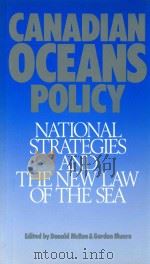
- Canadian Oceans Policy:National Strategies and the New Law of the Sea
- 1989 University of British Columbia Press
-
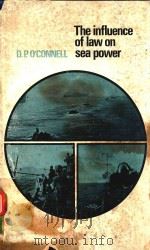
- THE INFLUENCE OF LAW ON SEA POWER
- 1975 MANCHESTER UNIVERSITY PRESS
-

- The International Law of the Sea
- 1994 Dartmouth
-

- Handbook on the law of private corporations
- 1936 West Publishing Co.
-
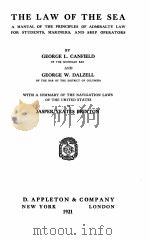
- THE LAW OF THE SEA
- 1921 D. APPLETON AND COMPANY
-

- THE UNITED NATIONS A HANDBOOK ON THE NEW WORLD ORGANIZATION
- 1946 PHOENIX HOUSE
-

- A Treatise on The Law Of Collisions at Sea
- 1880 Stevens And Sons
-
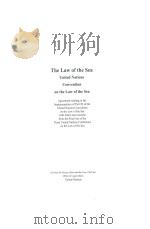
- The Law of the Sea
- 1997 United Nations
-
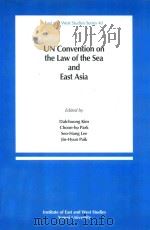
- UN Convention on the Law of the Sea and East Asia
- 1996 Institute of East and West Studies
-

- INTERNATIONAL LAW OF THE SEA AND MARINE AFFAIRS: A BIBLIOGRAPHY SUPPLEMENT TO THE 1980 EDITION
- 1984 MARTINUS NIJHOFF PUBLISHERS
提示:百度云已更名为百度网盘(百度盘),天翼云盘、微盘下载地址……暂未提供。➥ PDF文字可复制化或转WORD
